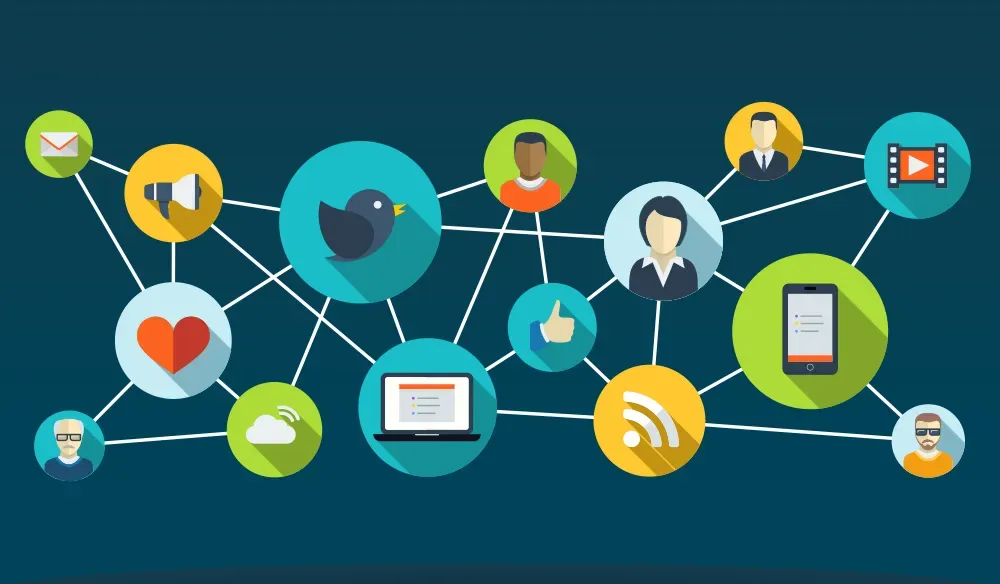How to Write a Networking Email: Tips and Examples for Effective Networking
Published on July 2nd, 2024
Networking is an essential skill in today’s professional landscape. Whether you're seeking career advice, looking to expand your professional circle, or aiming to forge new partnerships, the ability to craft a compelling networking email can open many doors. This guide will walk you through everything you need to know about writing effective networking emails, and how tools can make the process easier and more efficient.
Introduction to Networking Emails
Networking emails are a vital tool for building and maintaining professional relationships. Unlike casual emails, these messages need to be carefully crafted to make a positive impression and achieve your networking goals. Let's delve into the components of a successful networking email and the strategies that will help you write one.
Why Networking Emails Matter
Networking emails allow you to connect with individuals who can provide valuable insights, opportunities, and support in your professional journey. A well-written networking email can help you:
- Expand your professional network
- Gain industry insights and advice
- Explore new career opportunities
- Establish mutually beneficial partnerships
- Enhance your brand
Understanding Your Purpose
Before you start writing, it's essential to understand the purpose of your networking email. Are you seeking advice, looking for a job opportunity, or hoping to establish a new professional relationship? Clarifying your objective will guide the tone and content of your email.
Components of a Networking Email
A successful networking email consists of several key components:
- Subject Line: The first thing the recipient sees, a clear and compelling subject line can determine whether your email gets opened.
- Greeting: A polite and professional greeting sets the tone for your email.
- Introduction: Briefly introduce yourself and explain how you came across the recipient.
- Purpose: Clearly state the purpose of your email and what you hope to achieve.
- Value Proposition: Highlight how the recipient might benefit from connecting with you.
- Call to Action: End with a clear call to action, such as a request for a meeting or a reply.
- Closing: A polite closing and your contact information.
Step-by-Step Guide to Writing a Networking Email
Step 1: Crafting the Perfect Subject Line
The subject line is your first chance to grab the recipient's attention. Keep it concise, relevant, and intriguing. Here are some examples:
- "Seeking Career Advice from an Industry Expert"
- "Introduction from [Your Name]: Potential Collaboration"
- "Exploring Opportunities in [Industry]"
Step 2: Starting with a Polite Greeting
A professional greeting sets the right tone. Use the recipient’s name and a polite salutation:
- "Dear [Recipient's Name],"
- "Hello [Recipient's Name],"
- "Hi [Recipient's Name],"
Step 3: Introducing Yourself
Introduce yourself briefly but effectively. Mention any mutual connections or how you found the recipient:
- "My name is [Your Name], and I am a [Your Position] at [Your Company]."
- "I came across your profile on LinkedIn and was impressed by your experience in [Industry]."
Step 4: Stating Your Purpose
Be clear about why you’re reaching out. Keep this section concise and focused:
- "I am reaching out to seek your advice on transitioning into the [Industry] field."
- "I am interested in exploring potential collaboration opportunities between our companies."
Step 5: Providing a Value Proposition
Explain why the recipient should be interested in connecting with you. Highlight any mutual benefits:
- "With your extensive experience in [Field], I believe your insights could greatly benefit my career transition."
- "Our companies share similar goals in [Area], and I think a collaboration could be mutually beneficial."
Step 6: Ending with a Call to Action
Clearly state what you want the recipient to do next. This could be scheduling a meeting, responding to your email, or connecting on LinkedIn:
- "Could we schedule a brief call next week to discuss this further?"
- "I would love to hear your thoughts on this. Please let me know a convenient time for you."
Step 7: Closing the Email
End with a polite closing and your contact information:
- "Thank you for your time and consideration."
- "Best regards, [Your Name]"
- "Sincerely, [Your Name]"
- "Best, [Your Name]"
Examples of Effective Networking Emails
Example 1: Seeking Career Advice
Subject Line: Seeking Career Advice in [Industry]
Email:
Dear [Recipient's Name],
My name is [Your Name], and I am currently exploring opportunities in the [Industry] field. I came across your profile on LinkedIn and was impressed by your extensive experience in this industry.
I am reaching out to seek your advice on transitioning into this field. Your insights would be incredibly valuable to me as I navigate this career change. If you have some time, could we schedule a brief call next week to discuss this further?
Thank you for your time and consideration.
Best regards,
[Your Name]
[Your Contact Information]
Example 2: Exploring Collaboration Opportunities
Subject Line: Exploring Potential Collaboration
Email:
Hello [Recipient's Name],
I hope this email finds you well. My name is [Your Name], and I am a [Your Position] at [Your Company]. I came across your company while researching leaders in the [Industry] space.
I am interested in exploring potential collaboration opportunities between our companies. With your expertise in [Field], I believe we could achieve significant results together. Could we schedule a brief call to discuss this further?
Thank you for your time and consideration.
Sincerely,
[Your Name]
[Your Contact Information]
Example 3: Requesting an Informational Interview
Subject Line: Request for Informational Interview
Email:
Hi [Recipient's Name],
My name is [Your Name], and I am a [Your Position] at [Your Company]. I found your profile on LinkedIn and was particularly interested in your work at [Recipient's Company].
I am considering a career move into [Industry/Field] and would greatly appreciate the opportunity to learn more about your experience. Would you be open to a brief informational interview at your convenience?
Thank you for your time and assistance.
Best,
[Your Name]
[Your Contact Information]
Utilizing Tools for Networking Emails
Writing networking emails can be time-consuming, especially when you’re reaching out to multiple people. This is where tools like the HireQuotient AI Email Generator come in handy. This tool leverages artificial intelligence to help you draft personalized and effective networking emails quickly. Here’s how it can benefit you:
Benefits of Using the HireQuotient AI Email Generator
- Time-Saving: Generate professional emails in a fraction of the time.
- Personalization: Customize emails based on recipient information and context.
- Consistency: Maintain a professional tone and structure across all your emails.
- Efficiency: Focus on building relationships rather than crafting emails.
How to Use the HireQuotient AI Email Generator
- Input Basic Information: Enter details about yourself and the recipient.
- Select Email Type: Choose the type of networking email you need (e.g., career advice, collaboration).
- Customize Content: The AI generates a draft which you can personalize further.
- Send with Confidence: Review and send your polished email.
Advanced Tips for Writing Networking Emails
Do Your Research
Before reaching out, research the recipient thoroughly. Understand their background, current role, and any mutual connections. This will help you tailor your email and show genuine interest.
Be Concise and Clear
Busy professionals receive numerous emails daily. Keep your email concise and to the point. Clearly state your purpose and what you hope to achieve.
Personalize Your Email
Avoid generic emails. Personalize each email to reflect the recipient’s background and your specific reasons for reaching out. Mention any mutual connections or shared interests.
Follow Up
If you don’t receive a response within a week or two, consider sending a polite follow-up email. Reiterate your interest and appreciate their time.
Express Gratitude
Always thank the recipient for their time and consideration. A little gratitude goes a long way in building positive relationships.
Proofread
Before hitting send, proofread your email for any grammatical or spelling errors. A well-written email reflects your professionalism.
Common Mistakes to Avoid
Being Too Formal or Informal
Strike a balance between professionalism and friendliness. Being too formal can make you seem distant, while being too informal can come across as unprofessional.
Sending a Generic Email
Generic emails are easy to spot and often ignored. Personalize each email to make it relevant to the recipient.
Asking for Too Much
Be respectful of the recipient’s time. Avoid making requests that are too demanding or require significant effort.
Neglecting Follow-Up
Don’t be discouraged by a lack of response. Follow up politely to remind the recipient of your initial email.
Failing to Provide Value
Clearly articulate the value of connecting with you. Show how the recipient can benefit from the relationship.
Conclusion
Writing a networking email is a crucial skill that can significantly impact your professional growth. By understanding your purpose, crafting a clear and compelling message, and leveraging tools like the AI Email Generator, you can create effective networking emails that open doors and build meaningful connections. Remember to be genuine, concise, and professional, and you'll be well on your way to expanding your network and achieving your career goals.
Authors

Yash Chaudhari
With a strong background as an SEO and Content Specialist, Yash excels in driving organic traffic, improving search engine rankings, and creating SEO-optimized content. He has a proven track record of implementing strategies that increase website traffic and conversions. Additionally, Yash is an automotive enthusiast and has a keen interest in astronomy.
Hire the best without stress
Ask us how
Never Miss The Updates
We cover all recruitment, talent analytics, L&D, DEI, pre-employment, candidate screening, and hiring tools. Join our force & subscribe now!
Stay On Top Of Everything In HR

